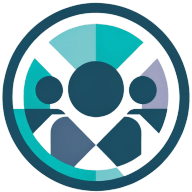Tips for Onboarding New Clients and Setting the Stage for Success
Diving into the complexities of client onboarding, this article distills key strategies for success, drawing on the wisdom of industry veterans. It navigates through the necessity of clear communication, the power of early wins, and the art of avoiding potential setbacks. With a blend of personalization and automation, readers are guided on how to create a seamless onboarding process that builds lasting trust.
- Build Trust with Clear Communication
- Focus on Early Wins
- Identify and Mitigate Potential Roadblocks
- Create a Shared Onboarding Document
- Combine Personalization with Automation
Build Trust with Clear Communication
Onboarding Clients with Care and Clarity As the founder of a legal process outsourcing company, I believe onboarding new clients is about building a foundation of trust and understanding right from the start. My approach focuses on clear communication and personalization. I remember onboarding a client who was initially hesitant due to a poor experience with another provider. Instead of diving straight into tasks, I scheduled a kickoff meeting to understand their pain points, priorities, and expectations in detail. This allowed us to tailor our processes and demonstrate our commitment to meeting their unique needs. One tip that's been particularly impactful is creating a customized onboarding checklist that outlines every step, from initial documentation to setting up communication protocols. This not only reassures clients that we're organized but also ensures no detail is overlooked. By showing attention to their specific requirements, we've consistently set the stage for strong, lasting partnerships.

Focus on Early Wins
Onboarding new clients is all about creating clarity and alignment from the very beginning. My approach starts with an in-depth discovery session where I focus on understanding their goals, challenges, and existing systems. This isn't just about identifying problems, it's about uncovering opportunities. From there, I develop a customized roadmap, outlining clear, measurable objectives and timelines. Transparency is key, so I make sure both the client and I are aligned on expectations, communication, and accountability. This foundation sets the tone for a strong, results-driven partnership. One tip that has been especially impactful is focusing on the "low-hanging fruit" first, addressing the quick wins that can immediately build momentum, boost morale, and free up resources for longer-term objectives. These small but significant successes create a ripple effect that fosters trust and motivation from the outset.
I recall working with a struggling logistics company in the UAE that was overwhelmed by inefficiencies and staff turnover. During our onboarding, I discovered that they lacked clear processes for employee performance reviews and customer service workflows. Leveraging my experience in recruitment and operational efficiency, I quickly introduced streamlined performance management tools and a step-by-step customer service strategy. Within the first 60 days, their employee retention improved and customer satisfaction scores jumped significantly. This rapid progress gave the leadership team confidence in my approach, enabling us to tackle bigger challenges like revenue diversification and market expansion. My years of experience working internationally and across industries helped me adapt solutions that fit their unique needs, proving that success starts with a clear plan and actionable early wins.
Identify and Mitigate Potential Roadblocks
When onboarding new clients, I take a personalized and structured approach by deeply understanding their specific needs, clearly defining expectations, and maintaining proactive communication throughout the process.
One impactful tip that has strengthened our client relationships is identifying potential roadblocks early and discussing mitigation strategies upfront. By anticipating challenges—whether technical, operational, or timeline-related—and addressing them proactively, we build trust and demonstrate a problem-solving mindset.
For example, in a recent onboarding, we flagged potential integration issues with the client's existing systems. By outlining solutions in advance, we avoided delays and ensured a smooth transition. This approach fosters collaboration, confidence, and long-term success from day one.

Create a Shared Onboarding Document
Onboarding new clients is a crucial part of setting the foundation for a successful partnership, and at Zapiy.com, we treat it as an opportunity to build trust and ensure clear communication from the start. My approach revolves around personalization, transparency, and a commitment to understanding each client's unique needs.
First and foremost, we make it a point to listen. We schedule an initial consultation to understand the client's business goals, challenges, and vision. This helps us tailor our services to meet their specific requirements, rather than offering a one-size-fits-all solution. It's all about building that initial rapport and ensuring they feel heard.
Another key component of our onboarding process is setting clear expectations. We work with the client to establish mutual goals and define success from both ends. This involves detailing deliverables, timelines, and how we'll communicate throughout the partnership. I've found that setting the stage this way not only creates a sense of accountability but also minimizes misunderstandings later on.
One tip that has had a particularly impactful effect on our client relationships is to create a shared onboarding document. This document serves as a "living" guide, outlining everything from key contacts to project timelines, and serves as a constant reference point. We make sure both sides have access to it and update it regularly. This transparency keeps everyone on the same page and helps the client feel confident about the process.
By fostering an environment of clear communication, transparency, and shared goals, we set the stage for long-lasting, fruitful relationships with our clients.
Combine Personalization with Automation
My approach to onboarding new clients is all about personalization and clear communication. At Nutun, we see onboarding as the foundation of a successful partnership, so we focus on really understanding our clients' unique goals and challenges from day one.
One tip that's been especially impactful is holding detailed discovery sessions early in the process. During these sessions, we don't just ask about their immediate needs—we dig deeper to understand their long-term objectives and any pain points they've experienced with previous providers. This helps us align our strategy with their vision and create a customized onboarding plan that sets clear expectations and timelines.
What's been a game-changer is combining this personal approach with automation. By automating repetitive tasks, like setting up systems or transferring data, we free up time to focus on building relationships and solving complex challenges. It's this balance of efficiency and personal touch that really sets the stage for a strong, lasting partnership.




